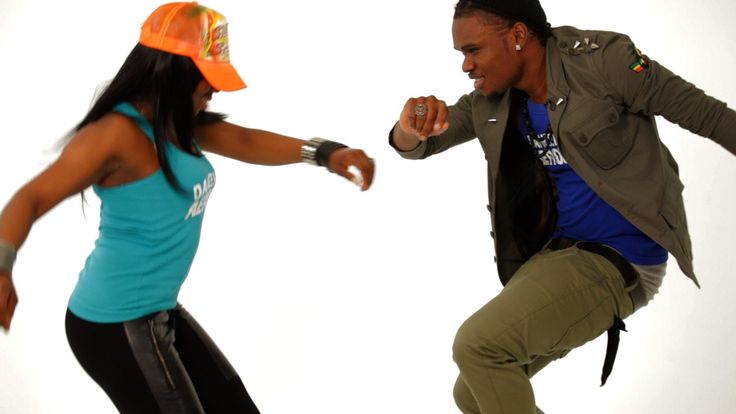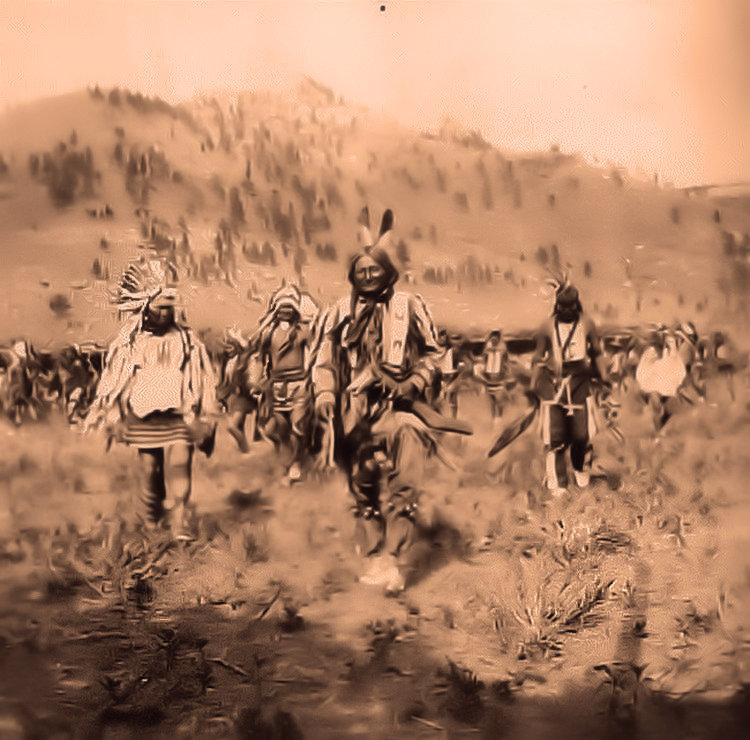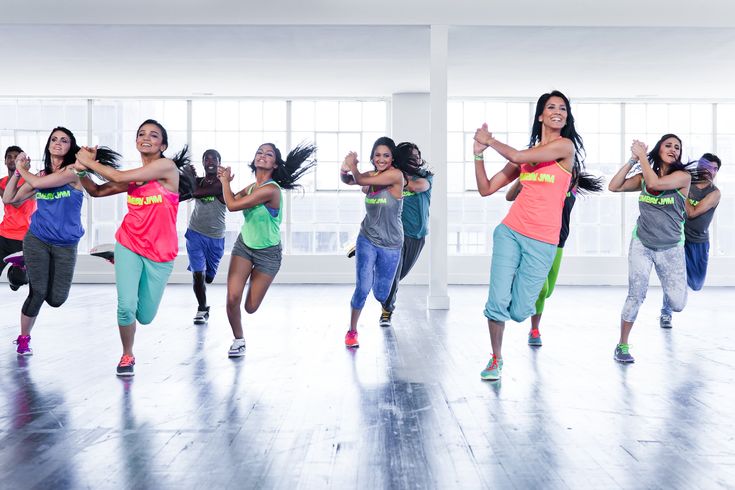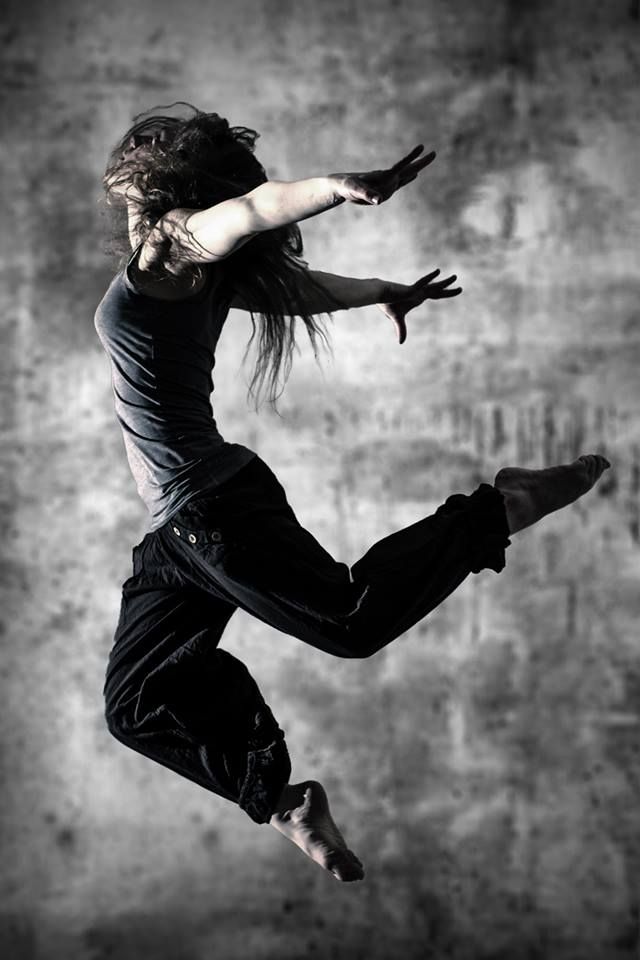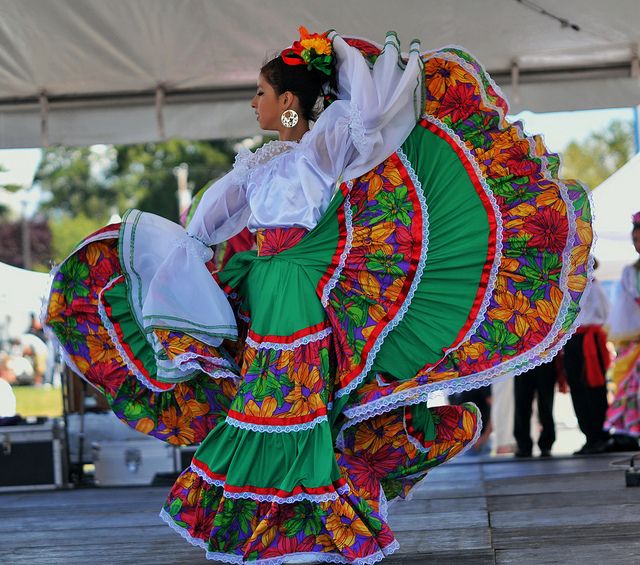How to be a good belly dancer
10 Tips for Maximizing Your Belly Dance Fitness Potential.
Last Updated on January 26, 2022
Guest Post by Ananke
It’s that time of year again. After sustaining myself on a diet consisting mostly of sugar cookies and eggnog for the month of December, my belly dance costumes are little… shall we say…snug?
I know I am not alone in this. About 40% of Americans will set at least one New Year’s resolution, and losing weight or becoming healthier is one of the most popular picks.
So even if you yourself are not amongst us repentant dieters in January, if you’re an instructor you probably have some students who are interested in turning their belly dance practice into a workout. Is belly dance actually effective for weight loss?
AnankeThe good news is that belly dance is great for fitness when it’s practiced regularly. But you have to treat it like a workout, which is much different than how many of us usually choose to practice.
Did you know? The average woman burns approximately 300 calories per hour belly dancing. That adds up to a pound of weight loss every two weeks (when practicing for an hour six times per week).
So how can we use belly dance as a workout? Here are a few of my favorite tips to get you started:
1. Set a schedule
Your workouts will be most effective if you practice three to five times per week for at least a half-hour.
Try building time to dance into your daily routine.
If you always dance at the same time each day, such as an hour before you shower for work, it is more likely to become a habit.
2. Warm it up, cool it down
A proper warm-up helps prevent injuries and maximizes your workout potential.
Try some light dance moves using a reduced range of motion. After a few minutes switch to gentle standing stretches for the hips, obliques, glutes, and shoulders.
Now you are ready for more intense movement. After your workout, while muscles are still warm, is the best time for deep stretching.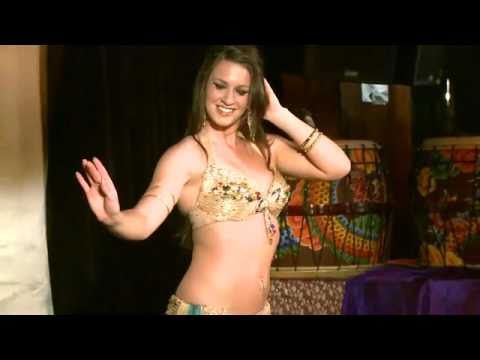
Add a cool-down to keep muscles long and limber, prevent soreness, and increase their flexibility.
3. Press play and go
When your focus is fitness, it is important to keep moving at an active pace. Create a playlist that motivates you to move so that when it is time to workout you can press play and go.
This is not the time to be critical of your technique and pause to practice particular isolation. Keep a shimmy going in between songs to keep your heart rate up.
4. Layer and travel
Layering movements and traveling incorporate the use of large muscle groups which is great for both toning and burning calories. Focus on moving about the room with circles, eights, and shimmies.
Do not forget level changes, moving from a semi-squat up to the balls of the feet, for working the thighs and calves.
5. Arms are key
It is easy to forget about them, but how you use your arms can make a big difference in your workout intensity. Use large, sweeping movements that keep your arms above your heart for the greatest challenge.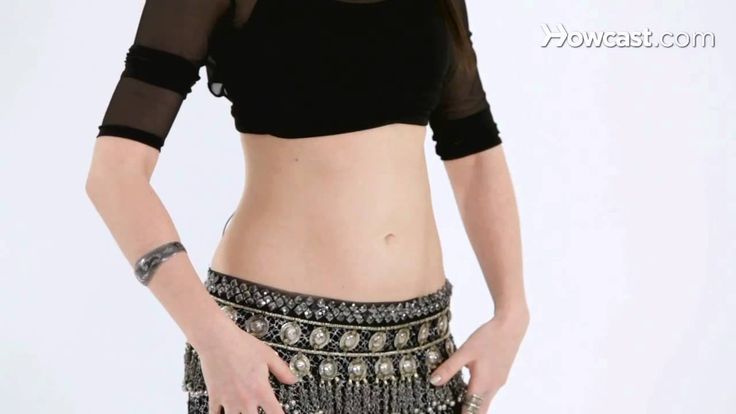
6. When in doubt, add weight
You would be really surprised at how heavy a veil feels after waving it around non-stop for thirty minutes.
Zills can act as great arm weights, too.
Try adding them into your routine and you will burn bonus calories while improving your prop work.
If you are looking for even more of a challenge, try some light ankle weights to make traveling steps even more potent.
7. Repetition is a good thing
When we dance in performance, we try not to repeat the same combinations over and over.
However, when we dance for fitness, repetition is ideal. For each song select just a few combos to practice and concentrate instead on improving form each time through.
8. Get creative with power moves
Since our focus is fitness there is no reason you cannot add in a few traditional gym moves to supercharge your workout.
Try adding a set of leg lifts, squats, lunges, push-ups off the wall, triceps dips off a chair or standing crunches into your combos.
Or use these moves to fill the time in between songs. This is a great way to add strength-building exercises to your cardio workout.
9. Balance your fitness routine
Belly dance is great for gentle toning and for improving cardiovascular health, but if your fitness goals are extensive you should consider adding other forms of exercise into your routine.
Weight lifting, pilates, yoga, step, kick-boxing, walking, and running complement belly dance well and increase your strength, endurance, flexibility, coordination, and balance.
10. Eat well
To dance well your body needs to be fueled well. Focus on making healthy choices like whole grains, fruits, and vegetables.
Avoid overly processed foods including refined sugars before your workout, as they tend to give you only a quick spike in energy before leaving you feeling tired.
Drink plenty of fluids before, during, and after you dance.
Did you know? To build muscle, your body needs protein.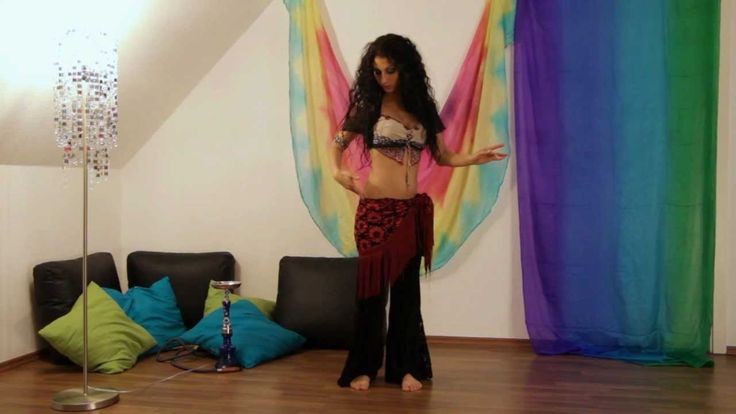
The average woman needs 50 to 65 grams per day, and many active women do not eat enough.
Try adding a protein-rich snack or meal before and after your workout.
Healthy choices include nuts, seeds, eggs, chicken, lentils or beans, and Greek yogurt.
What You Can Expect
If you also reduce your daily caloric intake (cut back on the eggnog and sugar cookies!) you can expect one to two pounds of weight loss per week with regular belly dance practice.
It depends on your current weight, the intensity and frequency of your workouts, and whether or not you have added in additional exercise.
Remember that doctors do not recommend more than two pounds of weight loss per week.
In addition, you can also expect some light toning of the arms, abs, chest, thighs, and glutes. Belly dance is also great for improving coordination, flexibility, and balance.
Bonus: How to Stick to Your Routine- Use friends and family for support.
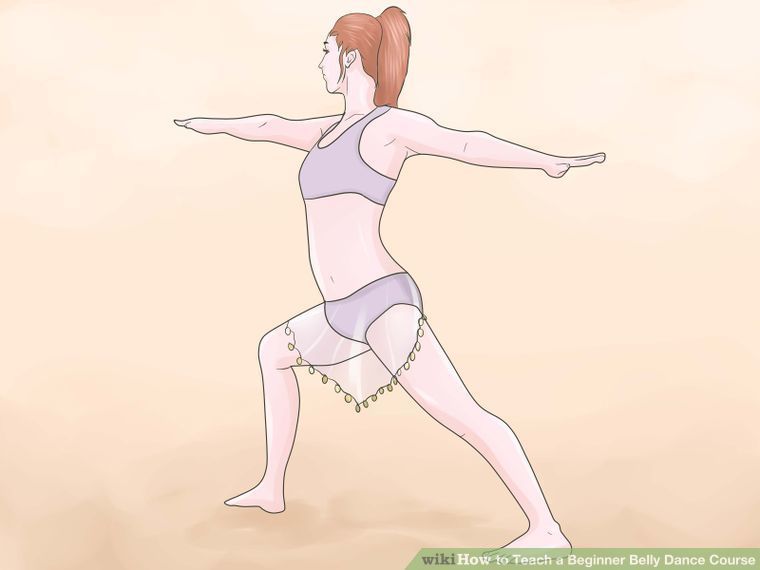 Tell the people you love about your goals. It helps you feel more accountable for following through and they may be able to offer support in ways you do not anticipate.
Tell the people you love about your goals. It helps you feel more accountable for following through and they may be able to offer support in ways you do not anticipate. - Use a diary. Write down a few notes every day. It’s been shown that keeping a record of what you eat encourages dieters to take smaller portions. A diary can also help you keep track of your progress, which is good to reference when you’re craving something you shouldn’t have.
- Use an online tool. There are several free websites that help you record and monitor your weight loss goals. Check out StickK or Habitforge.
About Ananke: Ananke is an award-winning performance artist and certified belly dance instructor out of Keene, New Hampshire.
She was certified in Group Fitness by the American Council on Exercise and taught dance fitness classes for three years at a local women’s gym. Ananke writes articles regularly on her own blog Ask Ananke.
The following two tabs change content below.
- Bio
- Latest Posts
Dr Valeria Lo Iacono is a belly dancer and a dance researcher with a PhD in dance and heritage. Valeria also teaches and performs as a belly dance but also enjoys learning ballet, jazz dance and other dance genres.
Sharing is caring!
259 shares
- Facebook64
- Fitness
|
(Well, Almost. .. .. Tips & To-Do's for You to Use!) By Arabella
As a long-time student of dance, my aim has always been not to "just do it", but to do it well. Time to share some tips and tricks I've learned over the years! And not one of these involves tracking down hard-to-find performance tapes, or paying out big bucks for instructional videos. Instead, they're very accessible - all things you can do for yourself, without spending a cent!
Feel The MovementOne of the most appealing aspects of Middle Eastern dance is the broad scope it offers for individual expression. So rather than just aping your instructor, let movement come from deep within, allowing it to emanate outwards. Try doing a move with your eyes closed. Does it feel different from the way it looks? Can you do it smoothly, or does it "catch" somewhere? Can you do it evenly on both sides? One of my instructors calls this tactile sensation "muscle memory".
Remember That Correction Is NOT CriticismIn fact, correction is nothing more than another option being presented. Try what is suggested, in the spirit of a new experience. If you like it, then claim it as your own. If not, just let it go - it's not worth keeping.
Lose The MirrorWhen choreographing for himself, Michael Jackson never used a mirror. Why? Because, he said, mirrors make you pose. In other words, they can make you too self-conscious. Some disciplines use a mirror as a means of checking body alignment, but mirrors can have limited benefits as correctional devices, because their use makes it difficult to see yourself objectively. In my opinion, the best way to use a mirror is to let it reflect your own joy in movement back to you (indeed the word "dance" has its roots in the Sanskrit "tanha", meaning "joy of life".
Work On TransitionsSmooth transitions make for a seamless performance, yet in many of the belly dance classes I've attended, they've rarely been discussed. Let's start with a definition: essentially a transition means moving a part of the body that is extended in some way back to a neutral or central position. Here's a simple example. If we execute a hip circle by first
moving the hips to the side, then to the front, to the other
side, and finally to the back, then all we need to do to return
the hips to "center" is to relax the pelvis. Another example, this time involving the arms and head. Let's say that you have one arm extended high overhead, and the other is to the side. If you move both arms so that they are extended in front of your chest, it's quite easy to reverse their initial position. If you would prefer the movement to look more like dance and less like semaphore, start by adding your head: look toward the arm extended to the side, and when you bring your arms to the center, move your head to the center as well. Make the movement lovely by rounding your arms and leading with your wrists; if you like you can cross your hands when you reach center. Now a third example, using feet. A lazy hip walk to the side
is basically a step, touch, step, touch, leaving the hip behind
as you step out to the opposite side.
Ask Yourself: "Where's The Money?"We have Len Gibson, a jazz and tap teacher from New York City
to thank for this wonderful phrase. He used it to remind us that
the audience is our bread and butter - for belly dancers, if
you prefer, our pita and hummus! - and that we must never lose
sight of that, even in class. He'd use the expression in class
whenever one of his students became too introspective, gazing
at their feet or studying their nails. Dancing in a club or restaurant offers many opportunities to acknowledge your audience. It's fun to let someone think you're dancing for them alone, if only for a brief moment. When executing a horizontal hand undulation, for instance, focusing on your hand will make you look cross-eyed. But if you project your gaze beyond your hand while still following its path and "seeing every little thing in the room" (as one of my instructors advised), you'll be able to involve several audience members in just a few short seconds. It's this kind of trick that can help keep each performance fresh! If you're uncomfortable making direct eye contact, you can opt for focusing on noses or foreheads instead, or it can help to think of their faces as pink balloons! The more you do it, the easier it gets. And did you know that a little nervousness may actually enhance
your performance? It gives you a special glow, plus a burst of
energy to make your entrance lively and unforgettable.
ConclusionThese are just a few of the tips and tricks that work for me. I share them in the hope that they may help you discover some of your own (which I hope you will in turn share with us!) Because those will be the most effective ones, allowing you to make the dance uniquely your own.
AcknowledgementArabella would like to dedicate this article to Dr. About the AuthorArabella, the author of this article, has contributed many informative pieces to this web site on a variety of topics, including:
Please visit Arabella's home page on this web site for a full list of articles she has contributed.
Copyright NoticeThis entire web site is copyrighted. All rights reserved. All articles, images, forms, scripts, directories, and product reviews on this web site are the property of Shira unless a different author/artist is identified. Material from this web site may not be posted on any other web site unless permission is first obtained from Shira. Academic papers for school purposes may use information from this site only if the paper properly identifies the original article on Shira.net using appropriate citations (footnotes, end notes, etc.) and bibliography. Consult your instructor for instructions on how to do this. If you wish to translate articles from Shira.net into a language other than English, Shira will be happy to post your translation here on Shira.net along with a note identifying you as the translator. This could include your photo and biography if you want it to. Contact Shira for more information. You may not post translations of Shira's articles on anybody else's web site, not even your own. If you are a teacher, performer, or student of Middle Eastern dance, you may link directly to any page on this web site from either your blog or your own web site without first obtaining Shira's permission. Click here for link buttons and other information on how to link.
|
5 tips to help you make progress in dancing
Is it possible to quickly improve your dancing skills with a few simple and effective steps? Yes! Read our tips to improve your dance technique.
Whether you're a beginner or an experienced dancer, whether you're into ballet, modern jazz, hip hop, or any other style, these 5 tips will help you reach your peak.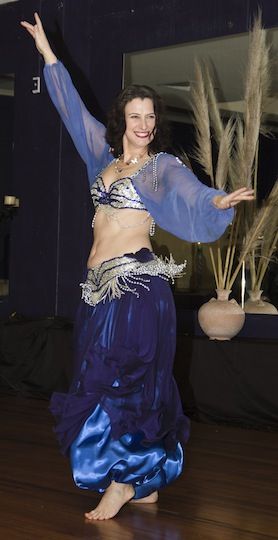
Would you like to change your dance costume while keeping the same clothes? This can be done with a single accessory or piece of clothing - a favorite item that can be worn in many ways.
Depending on your style of dancing or how you feel at the moment, you can wear this piece however you want right now to give yourself a whole new look.
Your dancewear is part of your expression, so get creative by choosing an outfit that reflects your personality. Mix styles and develop your creativity.
What dancer has not had difficulty maintaining balance during the batman retreat or when performing a pirouette without a somersault?
To keep a good balance, remember this: when you move into a half-pointe position, automatically think about getting taller, as if someone is pulling you up. Press down on the ground with the foot that touches the floor to keep a firm footing. Also pay attention to the muscles of the core: tighten the stomach, imagining that the navel should touch the spine, and tighten the gluteal muscles.
Dancing is not always easy to gracefully express yourself and see your body moving smoothly and elegantly. However, viewers often pay attention to the upper half of the dancer's body. To become more graceful, try to move in a relaxed way and keep a natural expression on your face. No one should notice the slightest sign of effort in your eyes!
Free your head and let it move, don't tense up. Do not spread or close your fingers as if you are holding something. A good dancer should have "light" hands. Your fingers should be controlled but relaxed (imagine water dripping from your fingertips and focus on the sensation).
Watch how you hold your hand: from the shoulder blades to the very nails. Keep your elbow from "falling" by taking care to support your wrist. Good support and resistance will help you shape curves that are smooth and elegant!
Flexibility is not required in dance, but it remains a highly sought-after characteristic for many dancers nonetheless.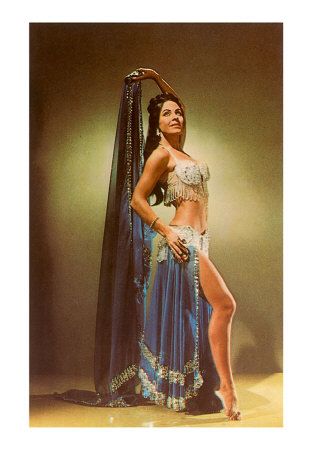 If it is not an innate trait, it can be developed gradually, with patience and care, given the capabilities of your body.
If it is not an innate trait, it can be developed gradually, with patience and care, given the capabilities of your body.
To make your body more flexible, we recommend a special exercise - splits . It is recommended to perform it only under the supervision of trainer ! Find a trainer at All Do Sport to train efficiently and safely.
First, warm up for 10 minutes, alternating several basic exercises. Sit on the floor with your legs together in a butterfly position and do a few rolls on your back. Then warm up your legs with a few exercises, do a series of jumps and a few deep lunges, and move on to the next:
- Execution: lie on your back and put your feet on the wall. Use your hands to move as close to the wall as possible. Touch the wall with your buttocks. Straighten your legs up and stretch your toes, keeping your feet and knees together. Legs and buttocks should rest on the wall.
 Start slowly spreading your legs apart. Lower them down to the most extreme position. Fix this position and try to relax, allowing gravity to push your legs towards the floor. Lightly press your hands on your feet. Gradually open your legs wider and wider, stretching your muscles.
Start slowly spreading your legs apart. Lower them down to the most extreme position. Fix this position and try to relax, allowing gravity to push your legs towards the floor. Lightly press your hands on your feet. Gradually open your legs wider and wider, stretching your muscles. - Breathing: inhale deeply and exhale slowly throughout the exercise to relax and oxygenate your muscles. This will gradually help your body become more flexible.
- Safety tips: make sure you keep your buttocks firmly against the wall and your back against the floor throughout the exercise. Pull in your stomach and lower your legs as low as possible, but not with force!
Do this exercise once every 15 minutes.
If you are already flexible enough, put on ankle weights such as Gym Weight Domyos. They will increase muscle tension and add extra inches to your stretch!
Before the performance, it is important to take time for yourself and relax. Every dancer has their own set of tips for overcoming fear on stage. Do you want to know the proven way? Learn to relax through conscious and deep belly breathing.
Every dancer has their own set of tips for overcoming fear on stage. Do you want to know the proven way? Learn to relax through conscious and deep belly breathing.
Really deep breathing brings a sense of calm and awakens your mental powers. It also helps to better oxygenate your muscles. To feel good about your body and mind, do this relaxation exercise while preparing for the performance and on the day of the event itself:
- Sit with your back against a wall or lie on your back
- Breathe in through your nose, slowly and deeply
- Place one hand on your belly and exhale through your mouth (you can gently press on your belly with your hand)
- Then inhale through the nose, expanding only the belly (the belly should rise)
- Exhale slowly through your mouth. Your exhalation should be slower than your inhalation.
- Repeat the whole sequence three times
Now you know 5 secrets that will help you improve your dancing skills or just feel good in your body before going on stage.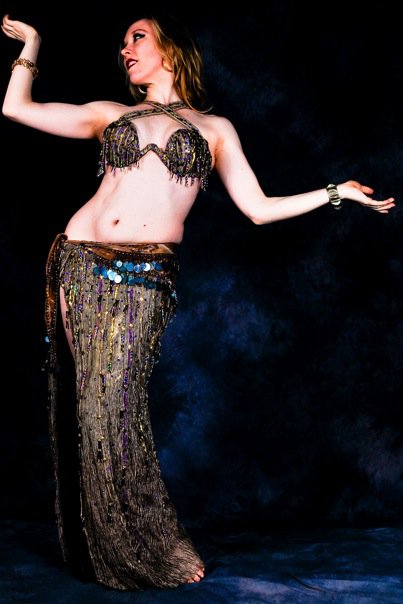 On the day of your performance, forget about everything else and focus on just one thing - the pleasure of dancing!
On the day of your performance, forget about everything else and focus on just one thing - the pleasure of dancing!
Life rules of a dancer - Simple magazine - LiveJournal
Robert Schumann's legacy in the music world is not only as one of the brightest representatives of German romanticism.
Being a subtle teacher, he left us a legacy of "Life Rules for Musicians". More than one generation of musicians has grown up on these simple and wise rules. There is simply nothing to add to them.
When I first started teaching classical dance, I really wanted, by analogy with Schumann's rules, to create rules for dancers that would help students develop in accordance with the high standards of ballet art.
This is what I got then:
Life rules of a dancer
2. If you want to dance every time you hear music, then you have the gift of a dancer - develop it.
3. When you learned to read, you first learned the alphabet, when a musician learns to play a musical instrument, he first learns the notes, so, in order to become a good dancer, you must first learn the alphabet of classical dance well. It will teach you how to move musically, coordinate your body and train it for complex movements.
It will teach you how to move musically, coordinate your body and train it for complex movements.
4. Listen to good music - both the great masters of the past and modern rhythms. A good dancer should be able to dance everything. Do not forget the folklore heritage - these are the origins of any choreography.
5. Love and respect your teacher - he will teach you not only to dance beautifully, but also to think beautifully.
6. Never be late and don't miss classes - this is how you steal precious learning time from yourself.
7. Always come to class in a good mood, ready to accept new knowledge, be calm and focused, otherwise all the words of the teacher will pass you by.
8. Repeat at home what you learned in class, otherwise you will stand still.
9. Be respectful of the accompanist - he introduces you to music, the dancer's best friend.
10. Always be careful.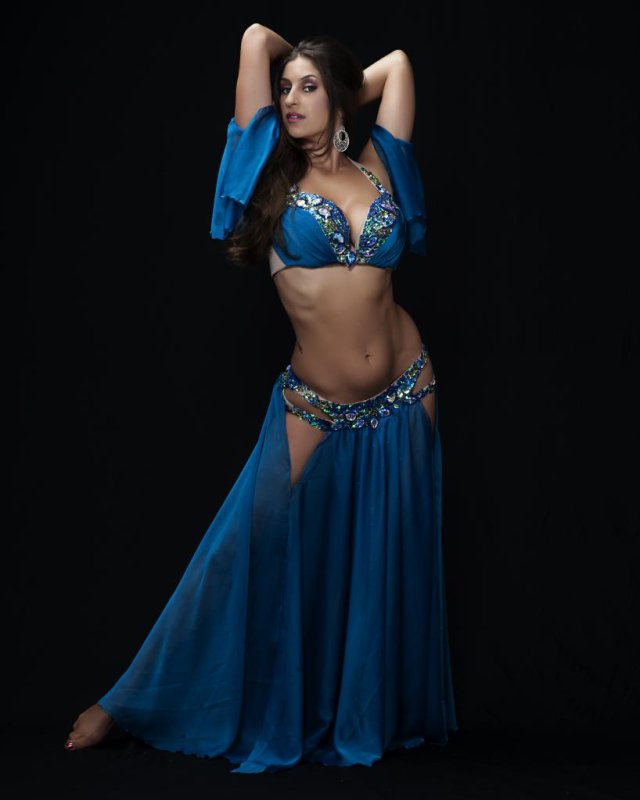 Your rehearsal uniform is your first stage costume. Treat him with love.
Your rehearsal uniform is your first stage costume. Treat him with love.
11. Learn to be independent. You have to wash your own uniform, darn ballet shoes, do your hair every day, collect everything you need for the lesson.
12. A dancer has no days off, no holidays, because dance is life, and there can be no breaks in life.
13. Learn musical literacy - this will allow you to better understand music, and therefore dance more expressively.
14. Each time dance as if you were performing on stage in front of an audience or a great master is watching you. Never dance "in full," otherwise you will never get up on both.
15. If you don't succeed with a complex movement, don't despair - repeat the simpler movements one more time, the ones that make up your complex one.
16. Do not eat sweets, white bread, buns, cakes, etc. - no child will grow up healthy on such food, but eat more vegetables and fruits.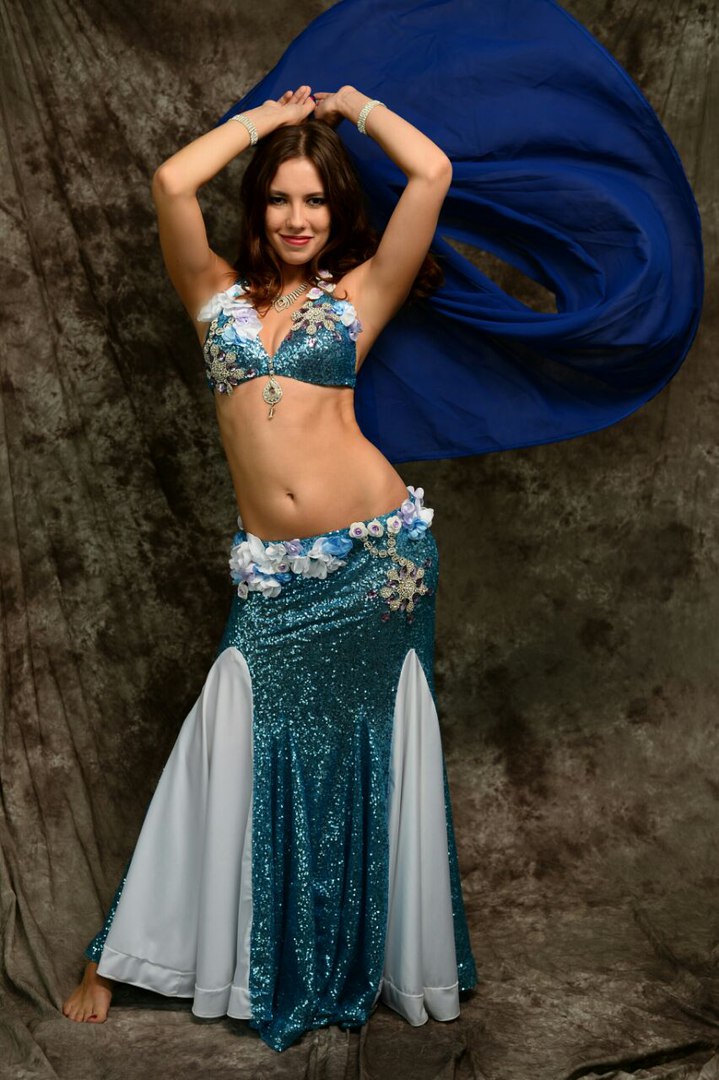
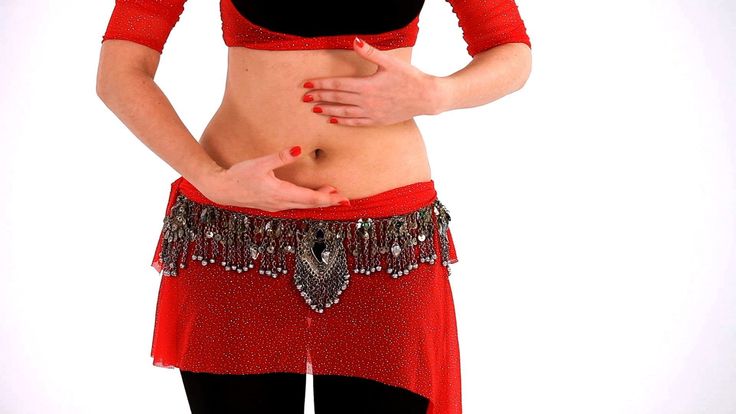 Another way to approach this kind of understanding is to try to explain a movement as if you were telling someone who has never belly danced.
Another way to approach this kind of understanding is to try to explain a movement as if you were telling someone who has never belly danced. ) It's easy to become dependent on the mirror, and some dancers find they even become disoriented when they dance without one. Yet the mirror is usually very much "there" in class, so how is this to be avoided? Here's what I do. I pretend that someone I admire, or am even attracted to, is watching the class. And I dance solely for them... and I dance to impress them.
) It's easy to become dependent on the mirror, and some dancers find they even become disoriented when they dance without one. Yet the mirror is usually very much "there" in class, so how is this to be avoided? Here's what I do. I pretend that someone I admire, or am even attracted to, is watching the class. And I dance solely for them... and I dance to impress them.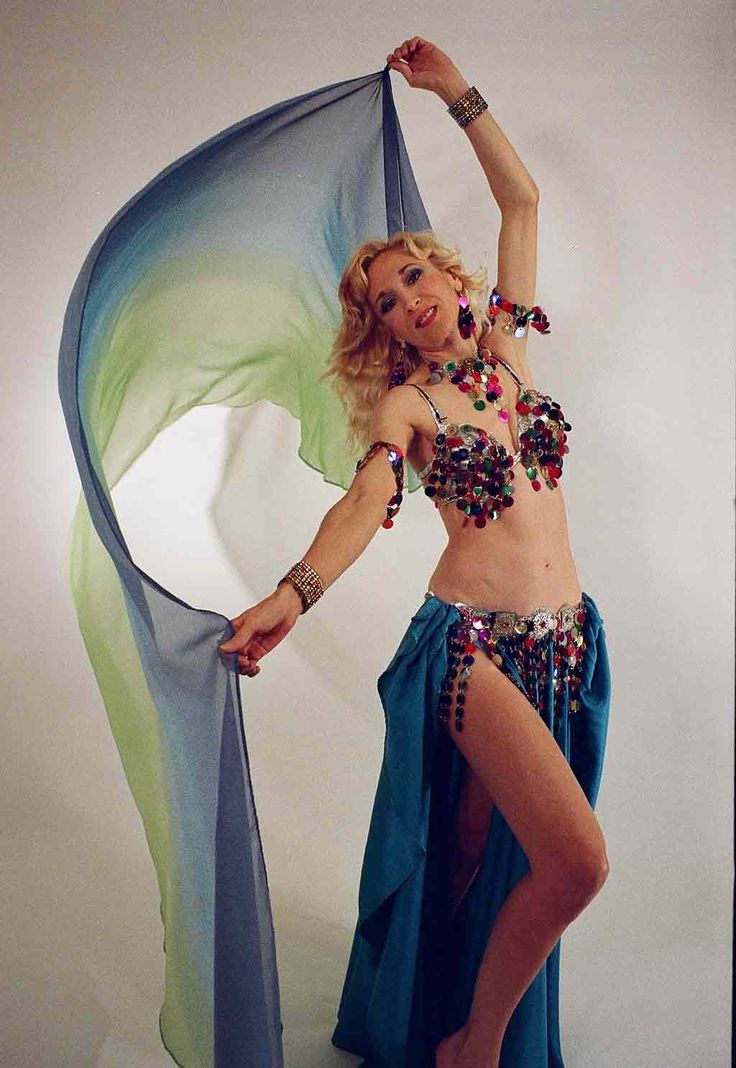 We are
now free to move the hips any way we like.
We are
now free to move the hips any way we like.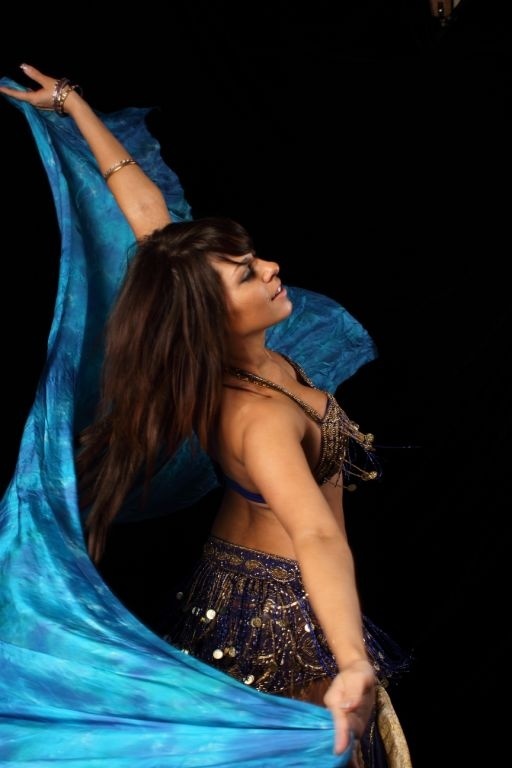 In other words, if you're
stepping to the left, the "lazy" hip is the right one.
When you bring your right foot close to the left for the "touch",
that is your transition point: you can continue to the left,
or change direction to start stepping to the right. Add the arm
movement described above, and look at you - you're dancing! As
a bonus, I find that working on transitions is invaluable for
helping me remember choreography - something I'm not very good
at!
In other words, if you're
stepping to the left, the "lazy" hip is the right one.
When you bring your right foot close to the left for the "touch",
that is your transition point: you can continue to the left,
or change direction to start stepping to the right. Add the arm
movement described above, and look at you - you're dancing! As
a bonus, I find that working on transitions is invaluable for
helping me remember choreography - something I'm not very good
at!
 What about
this interesting idea from dancer / teacher / choreographer Roula
Said: go shopping in the audience (!) In one memorable class,
she had us pretend that we were in a souq - a Middle Eastern
market - as we danced around the studio. "Ooh, look at those
earrings!", "I've just got to have that caftan!"
Then Roula began clowning, as only she can, parodying herself
performing: "Hmmmm, you're not bad looking!" ... "No
thanks, you've been eating garlic!" It was one of those
marvelous classes that stays with you forever.
What about
this interesting idea from dancer / teacher / choreographer Roula
Said: go shopping in the audience (!) In one memorable class,
she had us pretend that we were in a souq - a Middle Eastern
market - as we danced around the studio. "Ooh, look at those
earrings!", "I've just got to have that caftan!"
Then Roula began clowning, as only she can, parodying herself
performing: "Hmmmm, you're not bad looking!" ... "No
thanks, you've been eating garlic!" It was one of those
marvelous classes that stays with you forever. M. S., without whose adroit skill it never would have germinated, let alone come to be written.
M. S., without whose adroit skill it never would have germinated, let alone come to be written.






